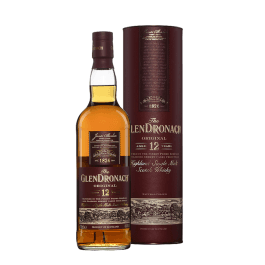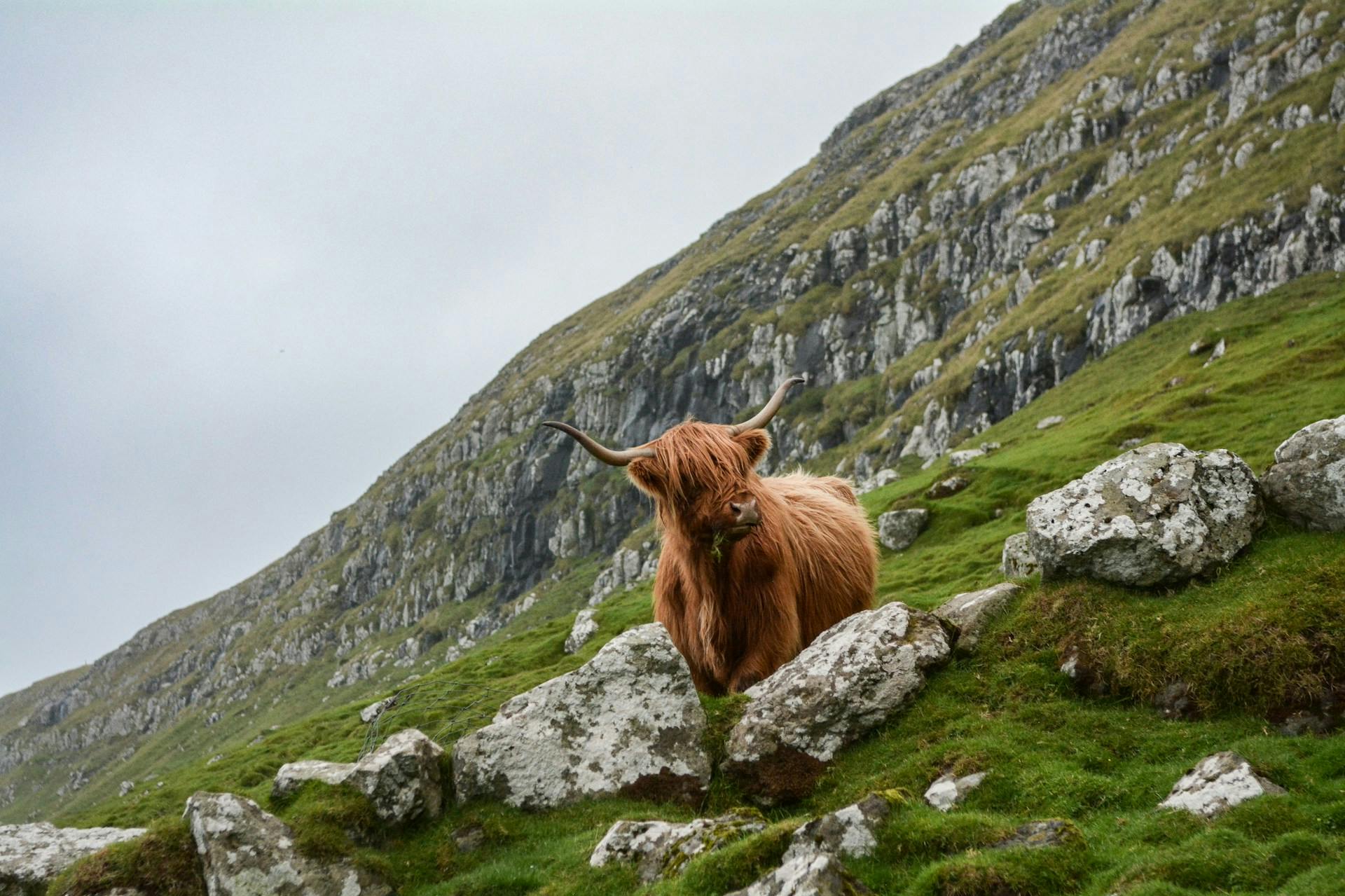
With an annual production exceeding 700 million litres, Scotch whisky shines worldwide for its unmatched quality, shaped by centuries-old traditions and craftsmanship.
Across Scotland’s legendary regions, where history and myth intertwine, iconic distilleries stand tall, offering whiskies with remarkably diverse profiles.
In this article, set off on a journey to discover ten renowned Scottish distilleries that are truly worth exploring.
Whether you’re a seasoned traveller of aromas or a curious newcomer eager to learn, this guide invites you on an unforgettable adventure through the heartlands of malt whisky.
5 regions that shaped Scotch whisky
The Lowlands: Pioneers of Scotch whisky
With gentle hills and fertile plains, welcome to the Lowlands — an ideal setting for whisky production.
This region is often seen as the gateway to the world of Scotch whisky, introducing enthusiasts to the complexity and diversity that whisky has to offer.
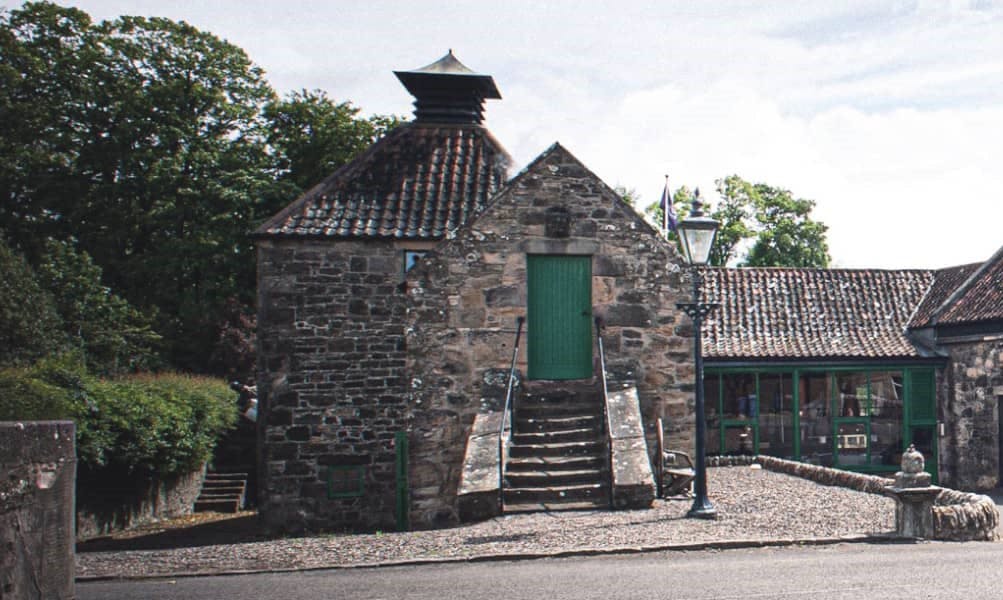
Whisky production in the Lowlands dates back several centuries. This region played a pivotal role in the rise of Scotch whisky production.
Lowland distilleries were among the first to adopt continuous distillation, enabling more efficient production and helping to boost the global popularity of Scotch whisky.
The origins of Scotch whisky in the Highlands
The Highlands, with their vast wilderness and breathtaking landscapes, are home to a whisky production as diverse as the region itself.
This area hosts some of Scotland’s most famous and historic distilleries, including Glenmorangie, The Dalmore, and Brora.
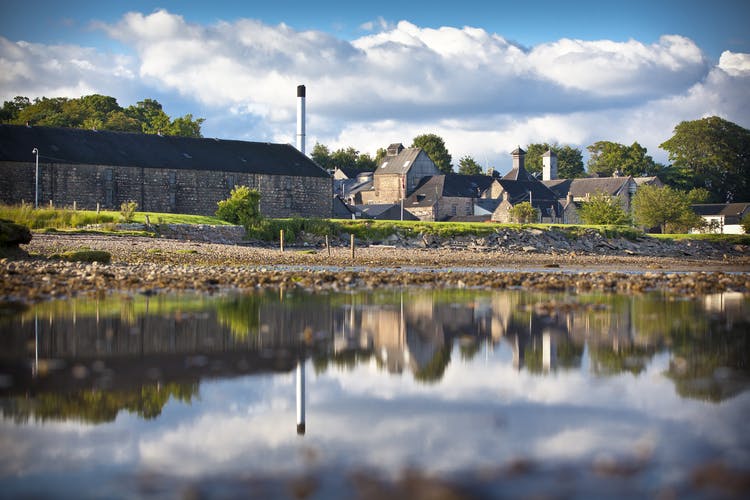
The Highlands are also the birthplace of legends, such as the story of the Angel’s Share — a poetic term for the evaporation of alcohol and water during the whisky’s cask maturation.
This evaporation, influenced by ageing conditions like humidity and temperature, is often more pronounced in the Highlands.
Scotch whisky in Speyside
Speyside, considered the beating heart of Scotch whisky production, is home to the highest concentration of distilleries in the country.
Its whiskies are celebrated for their complex aromatic profiles, often featuring fruity, floral notes and an elegant sweetness — perfectly embodied by iconic distilleries such as Macallan, Glenfiddich, and Glenlivet.
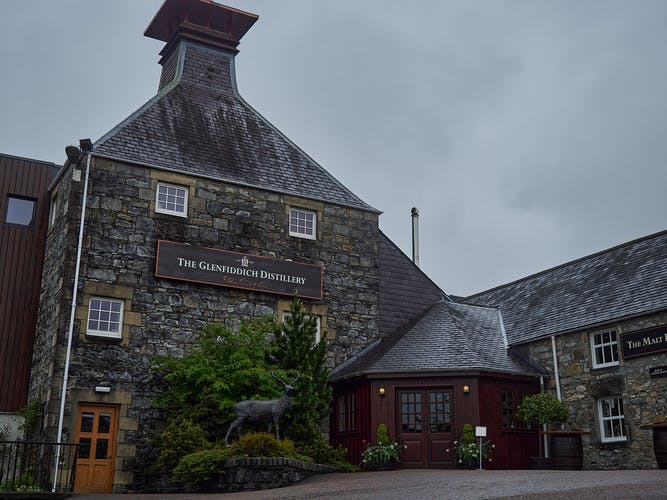
Historically, this region has enjoyed ideal conditions for whisky production, thanks in part to the purity of its water and the abundance of peat and barley.
A notable anecdote from Speyside involves the Glenfiddich distillery, a pioneer in marketing single malt whisky at a time when blends dominated the market.
It was partly due to Glenfiddich’s innovative approach in the 1960s that single malt whisky gained worldwide recognition as a premium product.
Speyside is also famous for the Malt Whisky Trail, a unique tourist route inviting visitors to explore some of the region’s most renowned distilleries and uncover the secrets of whisky making. The trail includes legendary names such as Macallan, Glenfiddich, Cardhu, and Glenlivet.
Rich in history and tradition, this region continues to captivate whisky enthusiasts worldwide with its ability to innovate while preserving the legacy of its master distillers.
Campbeltown: the historic heart of Scotch whisky
Once dubbed the "whisky capital of the world," with over 30 active distilleries in the 19th century, the town of Campbeltown and its surrounding region faced a dramatic decline in the 20th century. Today, only two distilleries remain in the town: Springbank and Glen Scotia.
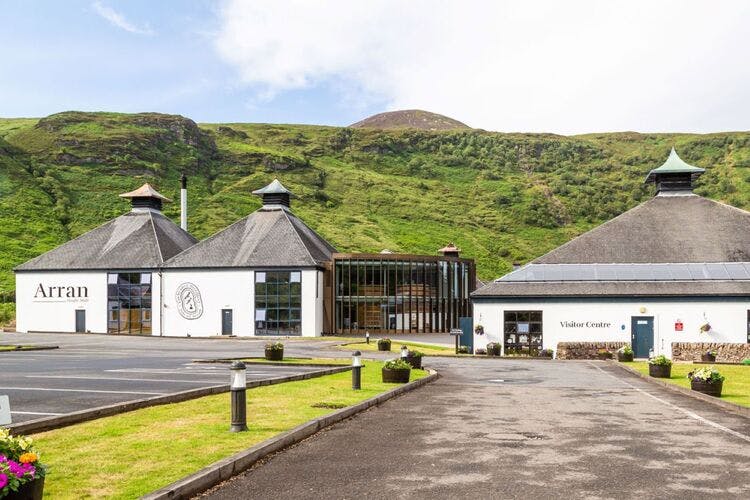
A legacy of this golden age, Campbeltown is now renowned for its distinctive character, notably through the legendary Springbank, one of the few distilleries that carries out the entire production process on-site.
Campbeltown is the only town in the world to have given its name to a whisky region, highlighting its historical significance as one of the leading centres of whisky production.
The island of Islay, one of the cradles of Scotch whisky
The island of Islay, a gem of the Hebrides, is a sanctuary for lovers of peated whisky. It is famous for its smoky malts, born from the local tradition of using peat for heating — a practice that naturally extended to drying barley as well.
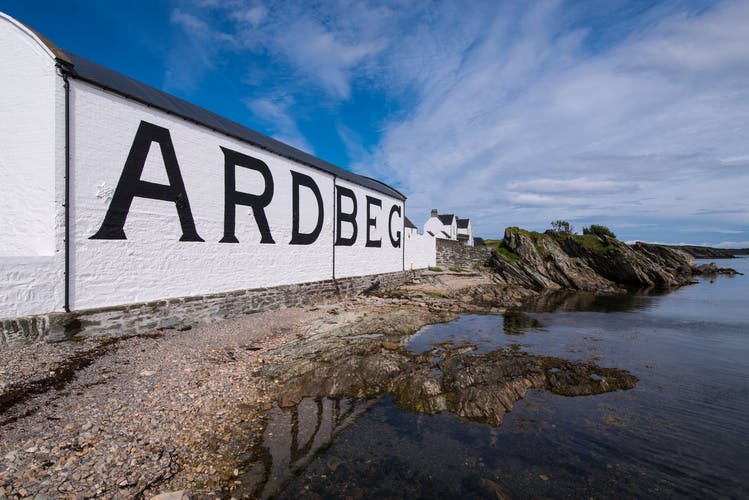
Historically, Islay was home to many illicit distilleries, taking advantage of its remote coastline to evade tax inspectors.
A famous anecdote involves the Laphroaig distillery, known for its bold and intensely peated whiskies. Thanks to this particularly powerful flavour profile, the distillery was allowed to export its whisky to the United States during Prohibition — not as a beverage, but as a medicinal product.
10 Scottish whiskies to delight your senses
The Dalmore Whisky: where distillation meets elegance
In the heart of the Highlands, where the waters of the Alness River whisper ancient legends, the Dalmore Distillery proudly stands. Nestled on the shores of the Cromarty Firth in the northern Highlands of Scotland, the distillery is renowned for its exceptional whiskies and masterful craftsmanship.
Founded in 1839 by Alexander Matheson, The Dalmore has built a reputation for excellence and innovation over the years. The distillery’s emblem, the twelve-pointed stag, traces its origins back to a 13th-century legend.
The story goes that the chief of the Mackenzie clan saved the King of Scotland from a charging stag, and in gratitude, the king granted him the right to use the twelve-pointed stag as the family crest.
When the Mackenzie family acquired the Dalmore Distillery in 1867, they introduced this emblem as the distillery’s logo.
Discover the aromas of The Dalmore whisky
Round and generous, The Dalmore is known for its delightful smoothness and impressive aromatic complexity, ranging from dried fruits to indulgent woody notes of chocolate and toffee.
DALMORE 12 ans

84.9 €
DALMORE 12 YEAR OLD
The Dalmore 12 Year Old, 40%, is an iconic single malt from The Dalmore Distillery. This whisky undergoes a carefully managed maturation, split between ex-bourbon casks and exclusive Oloroso sherry casks.
This dual maturation process gives The Dalmore 12 Year Old remarkable complexity and depth, with beautifully expressive aromas.
Glendronach Whisky: the essence of tradition
Hidden in the heart of the Highlands lies the Glendronach Distillery, founded in 1826 by James Allardice. Glendronach is especially renowned for its single malts aged in sherry casks, offering rich and deeply layered flavour profiles.
The history of Glendronach is marked by a pioneering spirit and resilience, having overcome challenges such as a devastating fire in 1837, which did not prevent the distillery from continuing its whisky production.
Explore the flavour universe of Glendronach whisky
Sherry casks leave their distinctive mark on Glendronach single malts, with notes of nuts, leather, and forest undergrowth. On the palate, its dense and powerful structure makes a truly impressive statement.
GLENDRONACH 12 YEAR OLD ORIGINAL
Rachel Barrie, master blender at Benriach and Glendronach, showcases her expertise in the art of sherry cask maturation with this 12-year-old whisky.
Aged exclusively in Oloroso casks, which impart notes of dried fruits and spices, as well as Pedro Ximenez casks, adding aromas of raisins and luscious sweetness, this Highland single malt is a true celebration of a return to traditional quality craftsmanship.
Ben Nevis Whisky: reaching the peak of flavour
At the foot of Scotland’s mighty Ben Nevis mountain lies the distillery of the same name, founded in 1825 by 'Long John' Macdonald.
In this wild and rugged setting, Ben Nevis crafts unmistakable whiskies — a quiet force, liquid echoes of the torrents and winds that shape these misty lands. Robust yet refined, these expressions blend the smoothness of malt with the crystal-clear freshness of mountain spring water.
Exploring the aromatic range of Ben Nevis whiskies
Beyond the initial rustic notes of leather and forest floor, Ben Nevis reveals a more indulgent side, with pastry-like aromas and tropical fruit notes adding delicious layers of complexity.
BEN NEVIS 10 ans

89.9 €
BEN NEVIS 10 YEAR OLD
The pure, fresh water from the Ben Nevis mountains forms the very essence of the whisky that bears its name.
Matured for a decade before bottling, this whisky captures the full power and spirit of nature, resulting in a complex, richly aromatic spirit.
Its distinctive floral, fruity, and spicy notes make it a favourite among single malt enthusiasts who appreciate whiskies with bold character.
Laphroaig Whisky : an adventure of intense flavours
Founded in 1815 on the island of Islay, the Laphroaig distillery is renowned not only for its unmistakable taste but also for its "Book of Friends," a register where visitors have been leaving their names for decades.
Laphroaig was also the favourite whisky of the Prince of Wales, who granted it a Royal Warrant in 1994 — a mark of royal approval.
Discover the aromas of this legendary distillery’s whiskies
The powerful smoky notes of peat combine with herbal and medicinal hints, alongside intensely briny aromas. Instantly recognisable, the bold style of Laphroaig is reserved for those who seek a truly intense tasting experience!
LAPHROAIG Quarter Cask
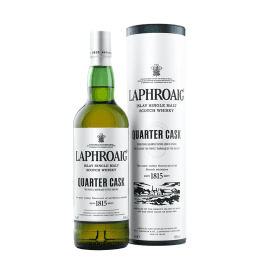
56.25 €
LAPHROAIG QUARTER CASK
This single malt, non-chill filtered and matured in small oak casks previously used for bourbon, is an official release that harks back to 19th-century traditions.
It perfectly captures the signature dual character of Laphroaig: a fruity, gentle outer layer that conceals a bold, assertive peat core — the very image of an iron fist in a velvet glove.
Ardbeg: an iconic whisky from the island of Islay
Also established on the island of Islay since 1815, Ardbeg Distillery is home to one of Scotland’s oldest stills, dating back to its founding — a testament to its long-standing distilling tradition.
Since then, the distillery has weathered many closures, before being revived in 1997. Today, it stands as a must-visit for lovers of peated whiskies.
Explore the unique flavour spectrum of Ardbeg whisky
Here, the peat reveals more earthy and tarry nuances, with smoky aromas recognised as some of the most intense in all of Scotch whisky.
ARDBEG 5 ans Wee Beastie

41.9 €
ARDBEG 5 YEAR OLD WEE BEASTIE
Ardbeg once again shakes up the whisky world with the addition of Wee Beastie — the "little beast" — to its permanent range.
Unlike the trend among peated single malts that seek softness and balance through extended ageing, Ardbeg’s Wee Beastie is crafted to preserve the raw intensity of its signature smokiness.
Aged for five years in Bourbon and Oloroso Sherry casks, this whisky aims to capture the bold, untamed essence of peat, making it a perfect choice for fans of intensely smoky flavours.
Macallan Whisky: the pinnacle of finesse
In the heart of Speyside, the Macallan Distillery, founded in 1824 by Alexander Reid, is a symbol of elegance and sophistication.
The distillery is renowned for holding one of the largest collections of sherry casks in the world, a strategy that greatly contributes to the depth and complexity of its whiskies.
In November 2023, a bottle of Macallan 1926 sold at auction for €2.5 million, setting a world record in the whisky world.
The bottle in question, a Macallan 1926, known as the "Holy Grail of whisky," was bottled in 1986 after maturing in oak sherry casks.
Explore the signature aromas of Macallan whisky
True to the great Speyside classics, Macallan offers aromas of honey and dried fruits, while its older expressions develop beautiful rancio notes, such as leather and walnut.
THE MACALLAN 12 YEAR OLD SHERRY OAK
This official release from The Macallan, aged for 12 years, benefits from full maturation in seasoned sherry casks.
Offered in limited quantities, this expression is becoming almost as rare as the distillery’s famed 18-year-old edition.
Clynelish Whisky: letting the Highlands shine
Since 1819, Clynelish, located in the northern Highlands, has forged a unique identity. Its whiskies reflect a heritage preserved despite modern advances, offering a journey through time that blends tradition with innovation.
The history of this distillery is closely tied to Brora, which originally carried the name Clynelish. In 1819, the Marquis of Stafford established the Clynelish distillery.
It quickly earned a reputation for producing exceptional quality whisky, capturing the essence of the Highlands with a touch of peat reminiscent of Islay spirits.
Over the decades, Clynelish has seen many phases, mirroring the ups and downs of the Scotch whisky industry.
The original Clynelish distillery operated until 1967, when a new facility bearing the same name was built next to the old site to meet growing demand.
The original site was briefly closed, then reopened in 1969 as Brora, primarily to produce peated whisky for blending at a time when Islay production was limited.
However, Brora was closed in 1983 during the Whisky Loch crisis — a period of overproduction that led to the shutdown of many distilleries.
After more than 160 years of production, Brora continues to fascinate collectors, who seek out its legendary bottlings.
Explore the flavour profile of Clynelish whisky
Clynelish whiskies are often distinguished by orchard fruit notes, and even hints of tropical fruits like mango or passion fruit, with older expressions developing a waxy texture and characterful depth.
CLYNELISH 10 YEAR OLD SPECIAL RELEASE 2023
This captivating Clynelish stands out with its bright, alluring aromas.
Matured exclusively in American oak casks that previously held bourbon, this first-fill ageing process highlights indulgent notes of caramel and vanilla while preserving the distillery’s unmistakable character.
The smooth, enchanting flavours gradually build in intensity, revealing layers of spiced vanilla and creamy caramel.
Springbank Whisky: reinventing authenticity
In Campbeltown, a town once crowned the whisky capital of the world, Springbank Distillery continues the legacy of a bygone era. Founded in 1828, it is one of the last distilleries in Scotland to traditionally malt its own barley on-site.
This demanding process is key to shaping the distinctive character of its whiskies.
Owned by the Mitchell family since its inception, Springbank remains one of the few Scottish distilleries still owned and operated by its founding family.
This has allowed the distillery to maintain a consistent and traditional approach to whisky-making.
To this day, Springbank is renowned for its dedication to craftsmanship and authenticity, avoiding excessive automation to preserve traditional whisky production methods.
This includes the use of old copper stills and a high level of manual control throughout the distillation process.
Discover the aromas of Springbank whisky
Lightly peated, Springbank whiskies offer a grain-forward profile with malty, toasted notes, beautifully complemented by ripe fruit flavours.
Glenfarclas Whisky: a legacy of richness
Nestled in the heart of Speyside, Scotland, Glenfarclas Distillery is an icon of the whisky world, renowned for its single malts matured in sherry casks.
Founded in 1836, Glenfarclas stands out for its independence and its traditional stills, both key to its exceptional production.
Acquired in 1865, Glenfarclas came under the ownership of the Grant family when John Grant purchased the distillery. Since then, six generations of the Grant family have carefully preserved its rich heritage and artisanal approach to whisky-making.
Discover the subtle notes of these whiskies
Glenfarclas’ flavour profile is deeply influenced by its sherry cask maturation, offering aromas of nuts and dried fruits, accented by hints of orange zest and warming spices.
GLENFARCLAS 16 ans 105
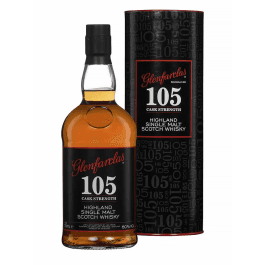
85.9 €
HIGHLAND PARK 12 YEARS OLD
At 12 years old, Highland Park’s most iconic expression demonstrates remarkable complexity and richness.
With a golden hue and amber highlights, its broad, rich, and precise nose is infused with notes of undergrowth, heather, a touch of sherry, vanilla, roasted barley, and a hint of smoke.
On the palate, it is full-bodied and fresh, offering a more pronounced balance that confirms the aromas perceived on the nose.
The elegant finish is of medium length, leaving behind a creamy malt that skilfully blends heather, ash, and a rich texture marked by vanilla and wood notes.
Highland Park: The whisky with a Viking spirit
Established in 1798 on the Orkney Islands, Highland Park Distillery has a unique history. It takes its name not from the Scottish Highlands, but from a local estate called "High Park," where the founder, Magnus Eunson, a priest by day and a smuggler by night, initially hid his illegal whisky.
Today, Highland Park is known for using local peat, which imparts a distinctive aromatic signature to its spirits.
The distillery is committed to preserving its unique environment and adopts sustainable practices, particularly in peat bog management, ensuring that this precious resource remains abundant for future generations.
Discover the aromas of this legendary whisky
At Highland Park, the delicately smoky notes of local peat are complemented by accents of heather honey, set against a backdrop of malt and dried fruits.
HIGHLAND PARK 12 ans

49.5 €
HIGHLAND PARK 12 YEARS OLD
At 12 years old, Highland Park's most iconic expression demonstrates remarkable complexity and richness.
With a golden color tinged with amber highlights, its broad, rich, and precise nose is infused with notes of undergrowth, heather, a hint of sherry, vanilla, roasted barley, and a touch of smoke.
On the palate, it is full-bodied and fresh, offering a more pronounced balance that confirms the aromas perceived on the nose.
The elegant finish is of medium length, leaving behind a creamy malt that deftly navigates between flavors of heather, ash, and a rich texture marked by vanilla and wood.
Answers to your questions about Scotch whisky
What are the criteria for choosing a good Scotch whisky?
Choosing a good Scotch whisky depends on several factors such as age, the type of cask used for maturation, and personal taste preferences.
Can you visit whisky distilleries in Scotland?
Yes, most Scottish distilleries offer guided tours where visitors can learn about the whisky-making process, from malting to distillation and maturation. It's a great way to understand the nuances that contribute to the global reputation of Scotch whisky.
What is the difference between a single malt and a blend?
A single malt whisky is made from malted barley at a single distillery, offering a unique and distinct taste. A blended whisky, on the other hand, is a mix of several malt and grain whiskies from different distilleries.
Are non-aged whiskies of lower quality?
No, a non-aged whisky is not necessarily of lower quality. Some producers choose not to indicate the age to emphasize the aromatic profile and the quality of the whisky rather than its aging process.
How does the Scottish climate influence the taste of whisky?
The Scottish climate plays a crucial role in whisky maturation. The weather conditions influence the rate of evaporation and the interaction of the whisky with the cask, thus contributing to the depth of aromas and flavors in Scotch whisky, which is noticeable during a whisky tasting.
TO EXPLORE SCOTTISH WHISKIES FURTHER
La Maison du Whisky has three boutiques in Paris:
In each of these boutiques, you'll find a wide selection of whiskies, rums, sakes, and other fine spirits.
Because a whisky can be described in a thousand words, our experts will be delighted to guide you through the must-try Japanese whiskies at La Maison du Whisky.
Follow our tasting calendar for upcoming events, or visit the Golden Promise Whisky Bar, which offers an extensive selection of whiskies and other spirits by the glass.
Written by
- Quentin JEZEQUEL - SEO project manager at LMDW.
Verified by
- Didier GHORBANZADEH - Wine & Spirits Expert at LMDW
- Clotilde NOUAILHAT - Editorial and Corporate Communications Manager at LMDW
